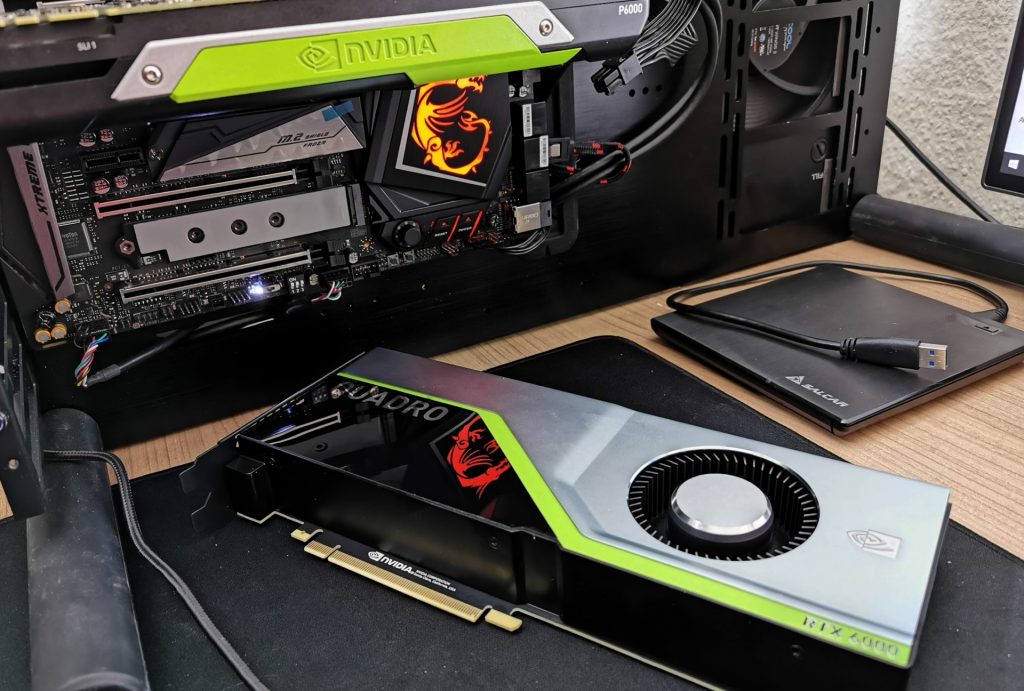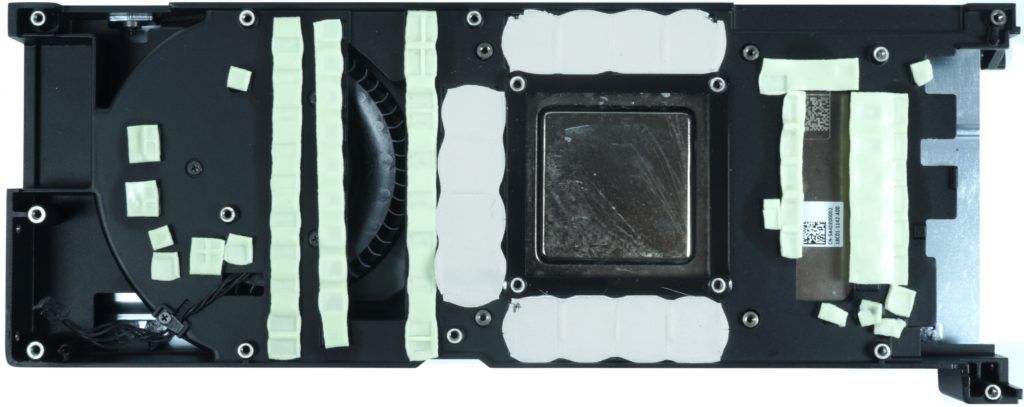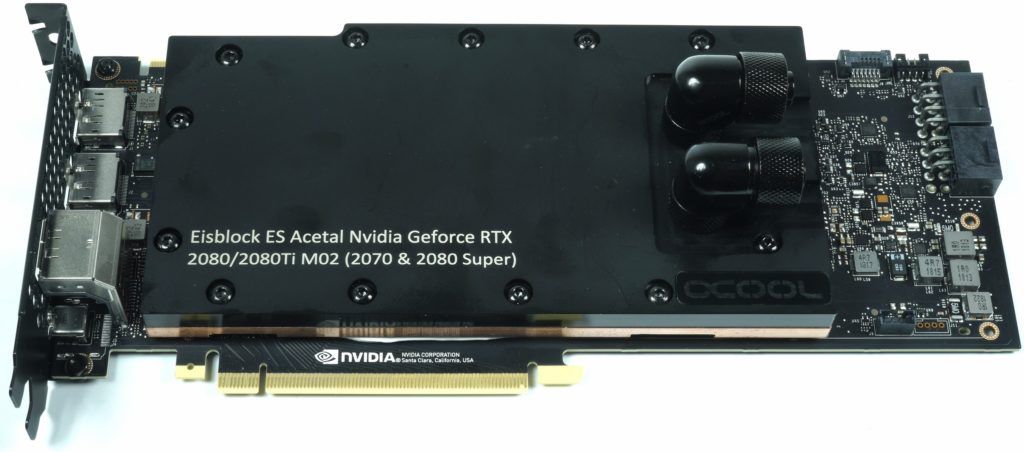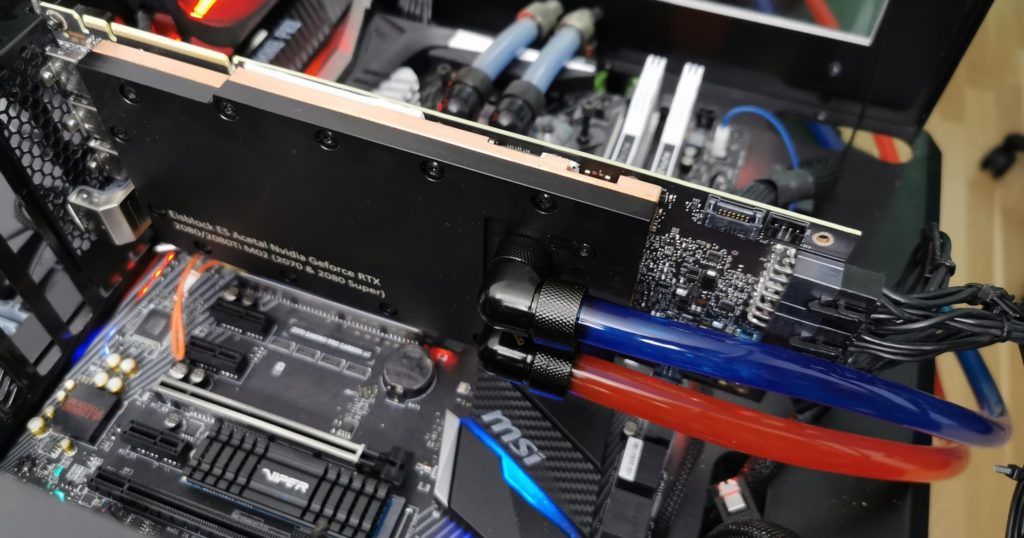Everybody can cool with air and honestly: the adrenaline rush when you take apart and rebuild a card that costs several thousand euros is not to be despised. But the basic idea behind the whole water action is actually quite simple. How much more clocks and thus also performance can be squeezed out of a Quadro RTX 6000 by the better cooling alone, because manual overclocking is not possible. There are strict rules, also concerning power limit and voltage.
Therefore, such a modification is not only a feasibility study, but rather also a test whether a water-cooled workstation is worthwhile at all. Because you can’t buy such a car ex factory, you have to do it yourself. The initial situation is clear: a Nvidia Quadro RTX 6000 with reference cooler likes to run at 80°C under full load and thus loses a lot of boost steps. Better cooling, more boost steps, lower leakage currents and higher GPU clocks? The answer is exclusively available here and now!
Changeover to water cooling
First of all I removed the original cooler block, i.e. the big mounting and cooling frame made of injection-moulded aluminium including radial fan and cover and the vapor-camber in the middle with the aluminium chamber cooler. What struck me at first sight: the white, ultra-soft pads with textile inlay, which I love so much. They hardly exert any pressure on the memory and squeeze themselves nicely into all the spaces in between, thus enlarging the contact surface once again.
The board hardly differs from that of a RTX Titan or GeForce RTX 2080 Ti, only the sockets for power supply have moved to the end of the card and where it used to be, now with Sync and Stereo two more exclusive connectors for workstation graphics cards can be seen. If you look at the lower row of memory modules above the slot, you can also see the glue of the very extensive underfill, which was introduced against the dreaded Space Invaders. But I had already talked about this in detail.
As cooler I use the Alphacool ice block ES Acetal for the RTX 2080/2080 Ti, which is now also available in Germany. 25 pieces were in stock, one of them is now installed here. The problem was that there must be enough space for the power supply connections in the back and there is also no space for a terminal of the top side of the card because of possible installations in the rack. By the way, the water block performs so well that I will also test it again individually – then at 380 watts on an RTX 2080 Ti and in comparison to the coolers already tested.
Well then? Full hydropower ahead, because I finally want to know what’s in it for me. The power consumption measurement is of course on board, along with the benchmarks, as well as the usual infrared and heat flow analysis. And of course the technical data of the GPU-Z card should not be missing:
Test system
I have also summarized the individual components of the test system in tabular form. The performance measurements were done on the workstation, the IR and power consumption measurements on the special Benchtable with a Core i9-9900K
| Test System and Equipment |
|
|---|---|
| Hardware: |
AMD Ryzen 9 3950X 4x 8GB G.Skill FlareX DDR4 3200 |
| Cooling: |
Alphacool Eisblock XPX (1151), XPX Pro (AM4, 2066) Alphacool Eiswolf (modified) Thermal Grizzly Kryonaut |
| Case: |
Lian Li T70, Raijintek Paean Open Benchtable |
| Monitor: | BenQ PD3220U |
| Power Consumption: |
Non-contact direct current measurement on PCIe slot (riser card) |
| Thermal Imager: |
1x Optris PI640 + 2x Xi400 Thermal Imagers Pix Connect Software Type K Class 1 thermal sensors (up to 4 channels) |
| Acoustics: |
NTI Audio M2211 (with calibration file) Steinberg UR12 (with phantom power for the microphones) Creative X7, Smaart v.7 Own anechoic chamber, 3.5 x 1.8 x 2.2 m (LxTxH) Axial measurements, perpendicular to the centre of the sound source(s), measuring distance 50 cm Noise emission in dBA (slow) as RTA measurement Frequency spectrum as graphic |
| OS: | Windows 10 Pro (1909, all Updates) |
PNY Quadro RTX 6000, 24GB GDDR6, 4x DP, USB-C (VCQRTX6000-PB)
 | lagernd | 2490,00 €*Stand: 26.07.24 09:28 |
| Doll Computer | ab Lager | 5198,00 €*Stand: 14.06.24 09:21 |






































Kommentieren